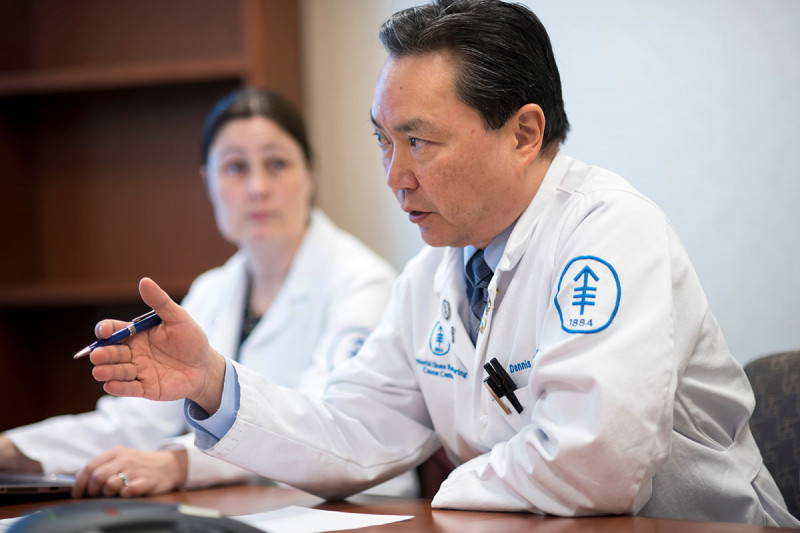
MSK gynecologic surgeon Dr. Dennis Chi says there are no specific symptoms for ovarian cancer, which explains why the disease is usually diagnosed at an advanced stage.
Ovarian cancer is considered a rare disease. About 20,000 women in the United States will be diagnosed with it in 2024, according to the American Cancer Society. Dennis Chi, MD, Deputy Chief of the Gynecology Service and Head of Ovarian Cancer Surgery at Memorial Sloan Kettering, addresses some of the most important things women should know about the disease.
1. There is no specific sign or symptom of early-stage ovarian cancer.
In contrast to many cancers, there is no one particular sign or symptom of early-stage ovarian cancer. The disease causes a fallopian tube or ovary to enlarge, according to Dr. Chi, which a woman won’t feel unless it twists and causes pain, or spreads and creates cancerous fluid in the belly. This fluid causes women to gain weight in their belly, even if they’re dieting and exercising. Ovarian cancer can also cause vague gastrointestinal symptoms, such as frequent bowel movements, constipation, or pelvic pressure. “It’s so nonspecific,” he points out. “Everyone experiences those things sometimes.”
2. Age and family history are the main risk factors for ovarian cancer.
Aging is one risk factor for ovarian cancer. The average age at diagnosis is 62. Family history also plays a role; however, people with a family history of the disease make up only 10 to 15 percent of those diagnosed. It is important to maintain a healthy weight through diet and exercise to reduce the risk of several other cancers and many other health problems, but unfortunately, those behaviors have no bearing on ovarian cancer risk.
3. Most ovarian cysts are not cancerous.
Some people think an ovarian cyst is always a cause for concern. But most ovarian cysts are not cancerous. “Sometimes sonograms in young women will show abnormalities on the ovary, but this is a normal process. You form a cyst on your ovary every month; it ruptures and releases an egg into the fallopian tube,” Dr. Chi says. After menopause, this process stops. A cyst on a 60-year-old woman’s ovary is more worrisome than one in a 30-year-old woman, according to Dr. Chi. “No matter what, ovarian cysts should be monitored, and women should seek a second opinion if they’re worried,” he says.
4. A pap smear is not a test for ovarian cancer.
“Pap smears detect only cervical cancer, not all gynecologic cancers,” says Dr. Chi. “In fact, there is no test that detects ovarian cancer in its earliest stages.” Two-thirds to three-quarters of women are diagnosed at a later stage, when the disease has spread to nearby tissues and organs.
5. Fallopian tube removal can prevent some ovarian cancers.
The most common type of ovarian cancer starts in the fallopian tubes — the narrow tunnels through which eggs travel from the ovaries to the uterus. “This finding suggests that we could prevent some ovarian cancers by removing the fallopian tubes,” Dr. Chi says. The removal can be done at the time of other surgeries in the abdominal or pelvic area — a procedure called an opportunistic salpingectomy. Data shows opportunistic salpingectomies are highly effective at preventing ovarian cancer. In fact, a research team led by gynecologic surgeon Kara Long-Roche, MD, published findings in JAMA Surgery concluding that with widespread adoption, salpingectomy has the potential to reduce ovarian cancer deaths in the U.S. by an estimated 15%.
Learn more about preventing ovarian cancer.
6. Even advanced ovarian cancer is treatable.
Many women with advanced ovarian cancer who have been treated at MSK live much longer than five years, says Dr. Chi. “This is because of our amazing team: our surgeons, medical oncologists, pathologists, radiation oncologists, and nurses,” he adds. “We’re improving every aspect of care: how we diagnose the disease, how we do surgery, how we give chemotherapy and targeted therapies, like PARP inhibitors, and more.”
This story was first published in 2019 and has been updated.



